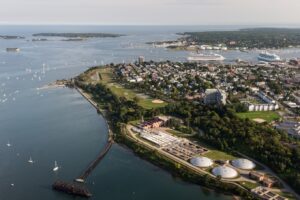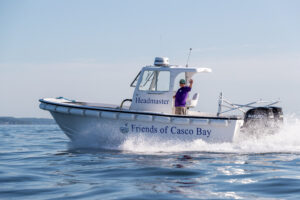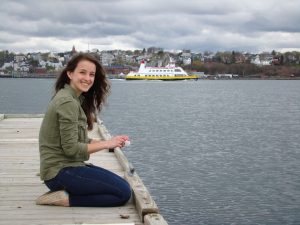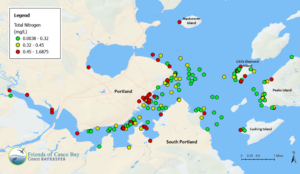
Nitrogen
Why nitrogen is important

Why has nitrogen use gotten out of hand?
Where does excess nitrogen come from?

Human sewage
Air pollution from tailpipes and smokestacks
How is excess nitrogen transported?
Problems caused by excess nitrogen
How is excess nitrogen transported?
Harmful algal blooms that lead to shellfish closures
Coastal acidification
Ocean scientists are finding that as seawater becomes more acidic, the shells of clams, corals, and tiny sea creatures at the base of the marine food web can become weakened and may actually dissolve. Acidic conditions can make it harder for Casco Bay’s clams, oysters, and mussels to build and maintain their shells.
Reduced water clarity
Degraded water quality
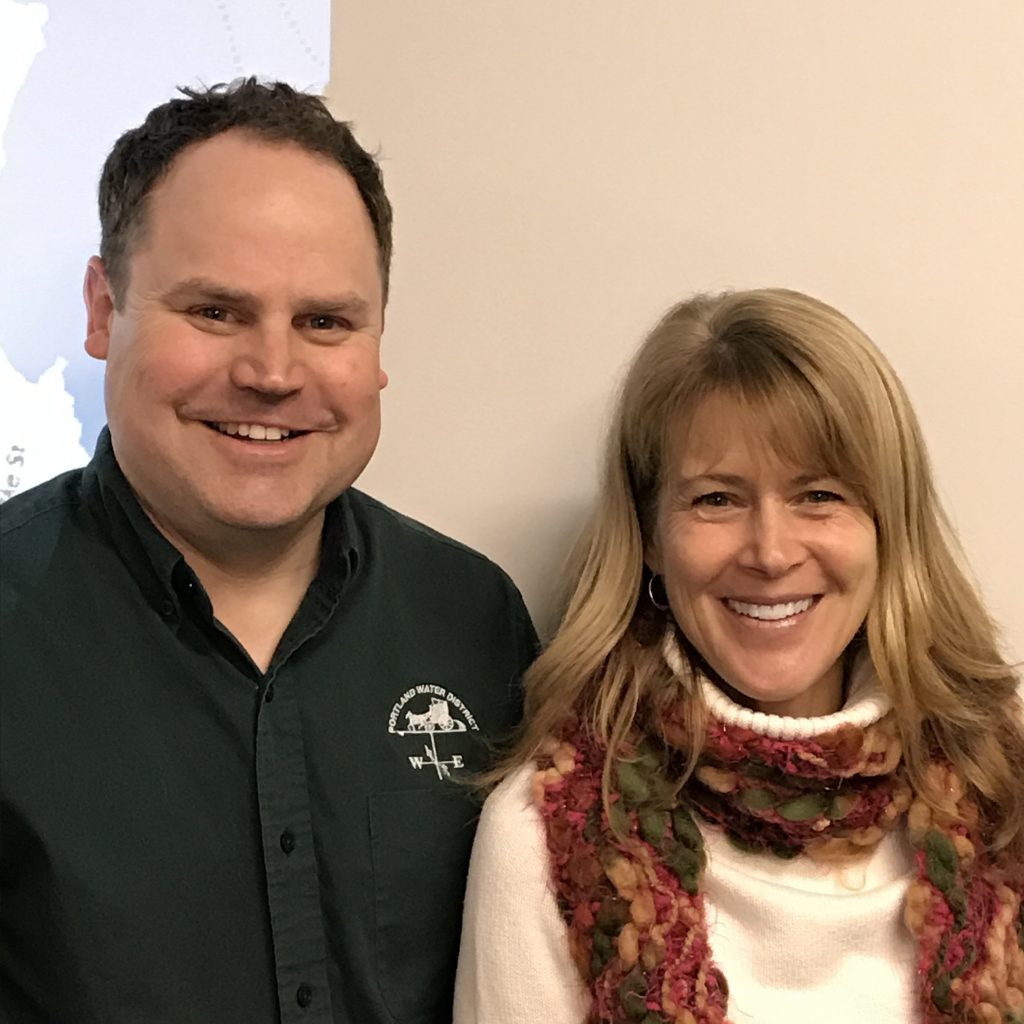
What is Friends of Casco Bay doing to limit nitrogen pollution?
Advocacy
Advocacy
Working to eliminate Combined Sewer Overflows
Strengthening the MS4 permit
Reducing nitrogen in effluent waters

Adding Casco Bay streams to the impaired waters watch list
Addressing the impacts of climate change
Forging partnerships
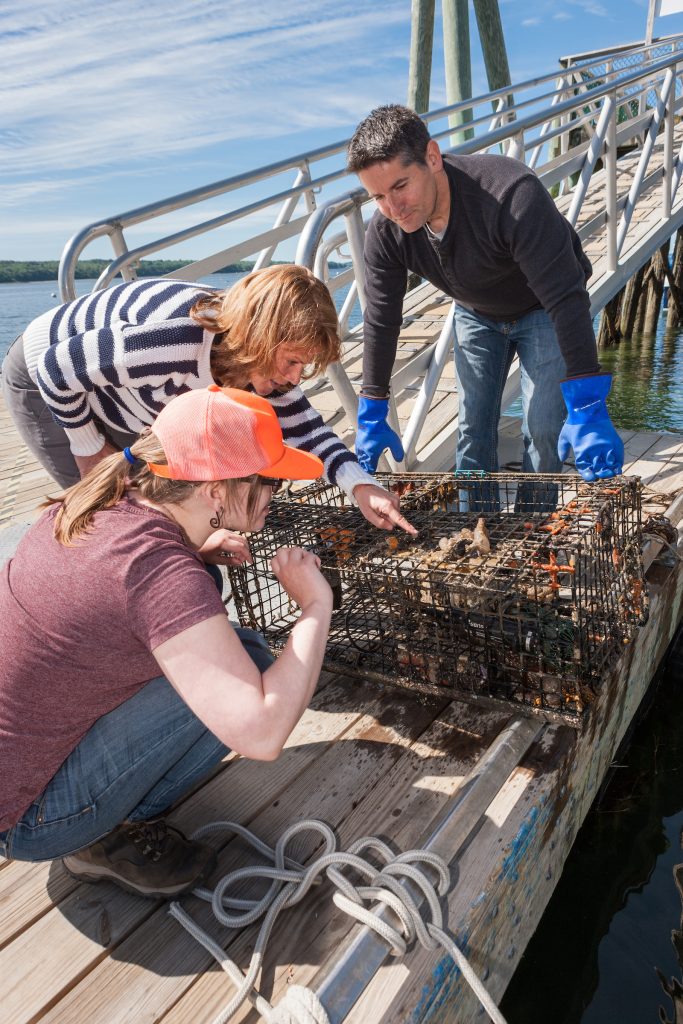
Continuous monitoring
Maintaining a national presence
Community Engagement
BayScaping
Our BayScaping “neighborhood socials” engage and educate the community about nitrogen pollution. We teach residents how to grow green lawns that keep Casco Bay blue using ecological, chemical-free landscaping techniques.

Research
Collecting data

Recruiting volunteers to collect data and share observations
Nitrogen Nabbers: In 2016, nearly 100 volunteers lined the Fore River in Portland Harbor on July 10 at 10:10 a.m., to collect small vials of seawater. Our Nabbing Nitrogen “Flash Mob” collected valuable data on levels of nitrogen. Results revealed that areas where stormwater flows into Casco Bay had the highest levels of nitrogen.
Water Reporters: We are beginning a new volunteer initiative to observe and share observations of algal blooms and slime-covered coves through our Water Reporter observing network for Casco Bay. Volunteer Water Reporters use a special smartphone app, or alternatively, a camera and a computer, to document, catalogue, organize, and share their observations of our changing Bay. By reporting what they see, volunteers will be helping us investigate possible sources of nitrogen pollution and other problems.
How can you fight nitrogen pollution?
Personal lifestyle changes, as well as collective actions, can make a difference in our communities. Find out more actions you can take here.
Collective action in your community
- Lobby for and support a town ordinance to limit the use of water-soluble, synthetic fertilizers
- Support (by funding) sewage treatment improvements
- Support budgets and policies that protect science and acknowledge climate change.
- Donate to support the work of Friends of Casco Bay to keep Casco Bay blue
- Volunteer with Friends of Casco Bay
Around your home
- Reduce or eliminate the use of fertilizers
- Maintain your septic system
- Burn less oil, wood, and coal to reduce pollution from smokestacks
- Pick up pet waste and dispose of it properly
On the road
- Reduce carbon emissions by driving less/sharing rides
- Make your next vehicle one that gets better gas mileage
- Keep your car tuned up to reduce pollution from tailpipes
On the Bay
- Empty your boat’s sewage holding tank at a pumpout facility
- Use shoreside toilets whenever possible
https://www.motherjones.com/food/2013/04/history-nitrogen-fertilizer-ammonium-nitrate/ and
“Postwar Fertilizer Explodes,” Wessels Living History Farm, York, Nebraska
♦ Amanda Briney, “All You Wanted to Know About the Green Revolution: History and Overview,” Thought Company, May 17, 2017
